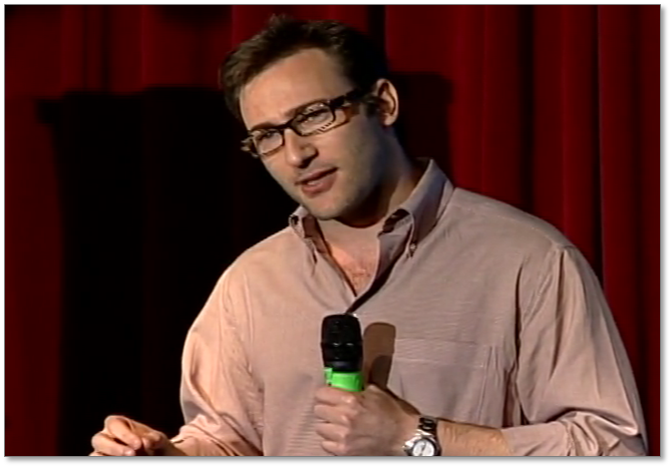“All the great inspiring leaders and organizations in the world … all think, act and communicate in the exact same way, and it’s the complete opposite to everyone else.” So, starts a remarkable and thought-provoking TED talk given by Simon Sinek.
As Sinek points out, most organizations can describe WHAT they do – the familiar description of the products and services they provide – but this message is often flat and uninspiring. Few can state WHY they do it. We don’t have to look far to see examples of this. On most websites and you’ll see pages dedicated to features, functions, solutions, services and “about us” – all explaining WHAT they do.
The truly inspiring organizations explain WHY they do something – and that message is reflected in their go-to-market messaging!
Apple is given as an example. As Sinek points out, their WHY statement is: “Everything we do we believe in challenging the status quo. We believe in thinking differently.”
This is so much more powerful than, “we make great computers, wanna buy one?”
So, why are WHY statements far more impactful than WHAT statements? Why is a statement beginning, “Everything we do …” far more arresting and engaging than, “Our solution is designed to …”, or “We’re the number one provider of ….”
I believe it all comes down to the way we filter and process the vast amounts of information we all receive each day.
When confronted with the huge number of marketing messages – the advertisements, well-placed logos, radio and TV commercials, internet messages and “a word from our sponsors” – we scan to selectively pick messages we want to learn more about. We have to scan in order to survive the daily onslaught of information. This scan-and-pick process corresponds to the intuitive quick-pass and analytical deeper-dive thought processes we use to navigate our daily lives.
Psychologist Daniel Kahneman looks at the difference between fast thinking (the scan) and slow thinking (the analytical deeper-dive). Analytical thinking is hard. It’s far more demanding and energy consuming than the fast thinking, intuitive process. Whenever possible, our minds slip into the effort-conserving fast thinking mode.
In his book “The Power of Habit”, Charles Duhigg explains that, for the routine daily chores, we rely on habitual behavior and automatic thinking. Again, it’s a way of conserving energy and being able to deal with the multitude of tasks faced each day. We then switch to the more demanding analytical processes when faced with novel or complex tasks.
Back to Simon Sinek’s talk – the WHY statement is far more attractive and powerful because it appeals to our autonomic fast-thinking, intuitive processing. The WHY someone does something – such as “think differently and challenge the status quo” appeals because it hits us at a gut level. We do not need to delve too deeply to analyze or understand it – we get it intuitively.
I’d recommend that anyone who hasn’t already viewed Sinek’s video to do so. We use it in our workshops with clients – it’s a very powerful tool for transforming a mundane elevator pitch into a captivating message.
The way buyers use the intuitive and analytical sides of their brain is not only a fascinating topic – it offers tools for marketers wishing to truly communicate with their audience.
